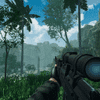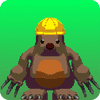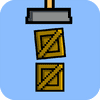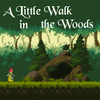Inspiring Kids to Start Learning Programming: Best Programming Languages and Getting Started
Are you wondering how to spark your child’s interest in programming? Perhaps you’re eager to introduce them to the world of coding but unsure where to begin. In this article, we’ll explore effective ways to encourage children to start learning programming, the most suitable programming languages for beginners, and how to kickstart their journey into the exciting realm of coding.
Opening the Door to Programming for Kids
Programming is not just about writing code—it’s about problem-solving, creativity, and building things from scratch. Imagine your child creating their own games, interactive stories, or even useful applications. Learning to code can empower kids with valuable skills for the future, regardless of their career path.
Why Should Kids Learn Programming?
Programming teaches logical thinking, problem-solving skills, and fosters creativity. It introduces concepts such as algorithms and debugging, which are crucial in today’s technology-driven world. Moreover, coding promotes perseverance and resilience—essential qualities for overcoming challenges in any field.
Choosing the Right Programming Language
When it comes to selecting the best programming language for kids, simplicity and versatility are key factors. Here are some of the most apt languages for young learners:
1. Python
Python is often recommended as a first language for beginners due to its clear syntax and readability. It’s used in various domains, from web development to data science. Kids can start with simple projects like creating text-based games or drawing applications using libraries like Pygame.
2. Scratch
Scratch is a visual programming language designed specifically for kids. It uses blocks of code that snap together like puzzle pieces, making it easy to understand and experiment with programming concepts. Kids can create animations, interactive stories, and simple games in Scratch.
Easy and Intuitive Interface
One of the standout features of Scratch is its user-friendly interface. Instead of typing lines of code, users manipulate colorful blocks that represent programming concepts. These blocks snap together like puzzle pieces, allowing kids to create sequences of commands easily. This visual approach removes the barrier of syntax and empowers children to focus on logic and creativity.
Encourages Creativity and Problem-Solving Skills
Scratch promotes creativity by enabling kids to create their own animations, stories, games, and interactive projects. It provides a canvas where they can express their ideas through programming. By experimenting with different blocks and seeing immediate results, children learn to think critically and solve problems logically.
Introduction to Fundamental Programming Concepts
Through Scratch, kids learn essential programming concepts such as sequencing, loops, conditional statements, variables, and events. These concepts form the building blocks of programming languages, laying a solid foundation for future learning in more advanced languages like Python or JavaScript.
Fosters Collaboration and Sharing
Scratch is not just a programming environment but also a community. Children can share their projects with others on the Scratch website, explore projects created by peers, and even remix them to create something new. This collaborative aspect encourages teamwork, peer learning, and a sense of accomplishment as they receive feedback and recognition for their creations.
Promotes Computational Thinking
Computational thinking involves breaking down complex problems into smaller, manageable parts and systematically solving them. Scratch encourages this mindset as kids design projects, debug issues, and refine their creations. These problem-solving skills are transferable to various disciplines beyond programming, preparing children for future academic and professional endeavors.
Engages Learners of All Backgrounds
Scratch is inclusive and accessible to children of all backgrounds and abilities. Its visual nature makes it suitable for younger learners who may not yet have strong reading or typing skills. Additionally, Scratch supports multiple languages, allowing kids from different regions to engage with programming concepts in their native languages.
Conclusion
Scratch stands out as a powerful educational tool that not only teaches programming but also nurtures creativity, problem-solving skills, and computational thinking in children. By providing a playful environment where kids can explore, experiment, and collaborate, Scratch empowers young learners to become confident creators and innovators in the digital age.
3. HTML/CSS
While HTML and CSS are not traditional programming languages, learning them provides a foundation for web development. Kids can create their own websites, customize designs, and understand the basics of how content is presented on the internet.
Getting Started with Programming Activities for Kids
Now that you have an idea of suitable languages, here are some fun activities to kickstart your child’s programming journey:
– Coding Games: Encourage kids to build their own games using platforms like Scratch or Python’s Pygame. They can start with simple projects and gradually increase complexity as their skills improve.
– Interactive Stories: Use Scratch to create interactive stories where characters respond to user input. This enhances storytelling skills while teaching basic programming concepts.
– Web Development Projects: Introduce HTML and CSS through projects like designing a personal webpage or creating a virtual portfolio. Kids can showcase their creativity while learning fundamental web technologies.
Conclusion
Introducing kids to programming opens doors to limitless creativity and problem-solving skills. By starting with beginner-friendly languages like Python, Scratch, or HTML/CSS, children can explore the basics of coding in a fun and engaging way. Encourage their curiosity, provide them with opportunities to create, and watch as they develop into confident programmers.
What project will you and your child tackle first? Share your ideas and experiences in the comments below!




















